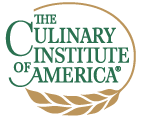Olive pomace oil obtained from crude olive-pomace oil by refining methods which do not lead to alterations in the initial glyceridic structure. It has a free acidity, expressed as oleic acid, of not more than 0.3 grams per 100 grams and its other characteristics correspond to those fixed for this
Olive pomace oil obtained by using authorised food-grade solvents to extract the oil from olive pomace which has previously been dried, the characteristics of which correspond to those fixed for this category in the IOC standard (COI/T.15/NC No 3). It is intended for refining for use for human
(a) Oil obtained by treating olive pomace with solvents or other physical treatments, to the exclusion of oils obtained by re-esterification processes and of any mixture with oils of other kinds.Oil comprising the blend of refined olive-pomace oil and virgin olive oils fit for consumption as they
Virgin olive oil not fit for consumption as it is which has a free acidity, expressed as oleic acid, of more than 3.3 grams per 100 grams and/or the organoleptic characteristics and other characteristics of which correspond to those fixed for this category in the IOC standard (COI/T.15/NC No 3). It
Virgin olive oil fit for consumption as it is which has a free acidity, expressed as oleic acid, of not more than 0.8 grams per 100 grams, and the other characteristics of which correspond to those fixed for this category in the IOC standard (COI/T.15/NC No 3).
expressed as oleic acid, of not more than 3.3 grams per 100 grams and the other characteristics of which correspond to those fixed for this category in the IOC standard (COI/T.15/NC No 3).

